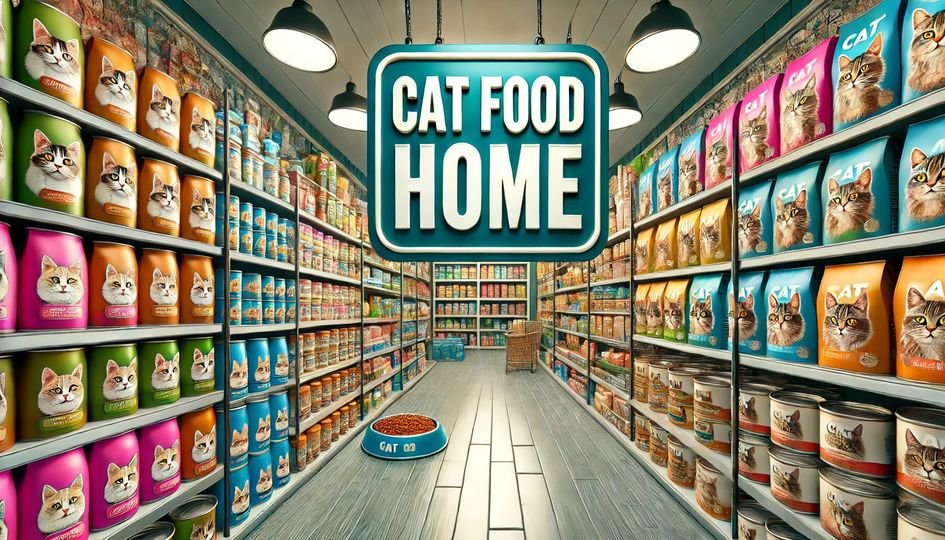If you’re looking to provide the best nutrition for your cat, consider preparing cat food home. Making homemade cat food ensures that your feline friend receives high-quality ingredients without any unnecessary additives. This guide covers everything you need to know about preparing cat food home, including essential recipes, benefits, and tips for maintaining your cat’s health.
Why Choose Cat Food Home?
1. Better Control Over Ingredients
Preparing cat food home gives you full control over what goes into your cat’s diet. You can select premium, fresh ingredients, ensuring your cat receives only the best.
2. Catering to Dietary Needs
Some cats have specific dietary requirements or food allergies. By making homemade cat food, you can customize the recipes to suit their needs, avoiding any harmful or triggering ingredients.
3. No Additives or Preservatives
Store-bought cat food often contains preservatives and additives that may not be beneficial for your cat’s health. When you prepare cat food home, you ensure that your pet eats a wholesome meal free from artificial substances.
4. Cost-Effective Solution
While premium commercial cat foods can be expensive, making cat food home can be a more budget-friendly option, especially when bought in bulk or using seasonal produce.
What Ingredients Should You Include in Cat Food Home?
To ensure your cat receives a balanced diet, it’s essential to include specific nutrients and ingredients:
- Protein Sources: Chicken, turkey, fish, or beef should form the base of your cat’s diet. These provide essential amino acids that support muscle growth and overall health.
- Healthy Fats: Incorporate oils like fish oil or chicken fat to supply omega-3 and omega-6 fatty acids, which are vital for your cat’s coat and skin.
- Carbohydrates: While cats are primarily carnivorous, small amounts of carbohydrates like rice or oats can add bulk and variety to their meals.
- Vegetables: Incorporate safe vegetables like carrots or peas for added vitamins and fiber.
- Supplements: Taurine, calcium, and other feline-specific supplements should be added to meet your cat’s nutritional requirements.
Top Homemade Cat Food Recipes
1. Chicken and Rice Delight
Ingredients:
- 1 cup of cooked chicken (shredded)
- ¼ cup of cooked rice
- 1 tablespoon of fish oil
- A pinch of salt (optional)
Instructions:
- Combine all ingredients in a bowl.
- Mix well and serve at room temperature.
- Store in an airtight container in the refrigerator for up to 3 days.
2. Fish and Veggie Mix
Ingredients:
- 1 can of tuna (in water)
- ½ cup of steamed carrots and peas
- 1 tablespoon of olive oil
- 1 boiled egg (mashed)
Instructions:
- Mix tuna, vegetables, and olive oil in a bowl.
- Add mashed boiled egg and stir thoroughly.
- Serve fresh or refrigerate for up to 2 days.
3. Beef and Liver Feast
Ingredients:
- ½ pound of ground beef
- 1 ounce of chicken liver (cooked and chopped)
- ¼ cup of sweet potatoes (boiled and mashed)
- 1 teaspoon of taurine supplement
Instructions:
- Cook beef and liver in a pan until fully cooked.
- Mix with sweet potatoes and taurine supplement.
- Let cool before serving.
Conclusion
Choosing to prepare cat food home is a rewarding way to ensure that your feline friend receives a nutritious, balanced, and wholesome diet. With control over the ingredients, you can cater to your cat’s specific health needs, preferences, and dietary restrictions, offering them a meal made with love and care. By incorporating high-quality proteins, healthy fats, and essential supplements, you provide your cat with the nutrients they need to thrive.
Remember, transitioning to homemade cat food should be done gradually, and it’s always best to consult with your veterinarian to ensure the diet is well-balanced and meets all of your cat’s nutritional needs. Your cat’s health and well-being are the priority, and by preparing cat food home, you’re taking an extra step toward providing them with a happier and healthier life.
For more cat food options and to explore high-quality products, visit Pet Mart’s shop or reach out to us for personalized advice. Happy feeding! 🐾
FAQs About Cat Food Home
Q1: Can I give my cat raw food?
While raw food diets have gained popularity, they pose a risk of bacterial contamination. If you choose to go raw, ensure all ingredients are fresh and handled safely.
Q2: How often should I feed homemade cat food?
It’s best to feed your cat twice daily, using portion sizes recommended by your veterinarian based on your cat’s weight and health status.
Q3: Do I need to add supplements to homemade cat food?
Yes, cats require specific nutrients like taurine and calcium. Consult your vet to determine which supplements are necessary for your cat.
Q4: Is it safe to switch my cat to homemade food suddenly?
No, transitioning should be gradual. Start by mixing small amounts of homemade food with their current diet, increasing the ratio over a week.
Q5: Can I freeze homemade cat food?
Yes, you can freeze portions of homemade cat food for up to 2 weeks. Ensure the food is properly thawed before feeding.
Q6: What foods should I avoid?
Avoid onions, garlic, grapes, and chocolate, as these can be toxic to cats.
For more product options, visit our shop, or explore our range of high-quality cat food:
For any inquiries, contact us.

